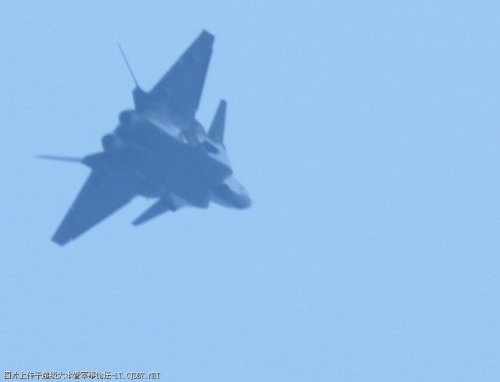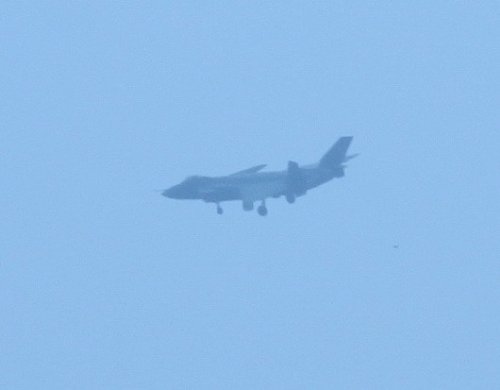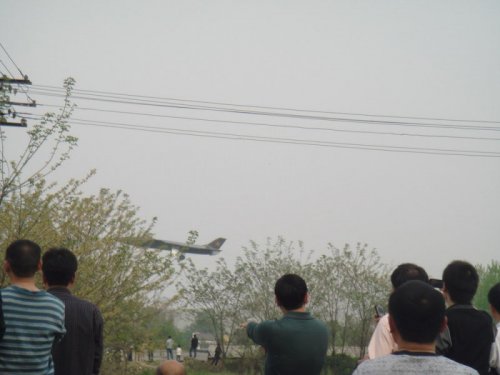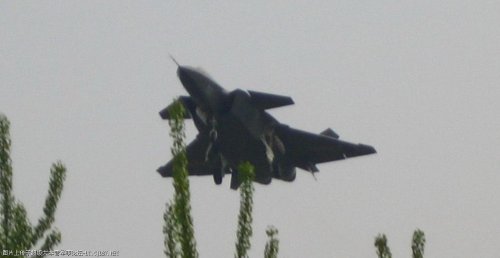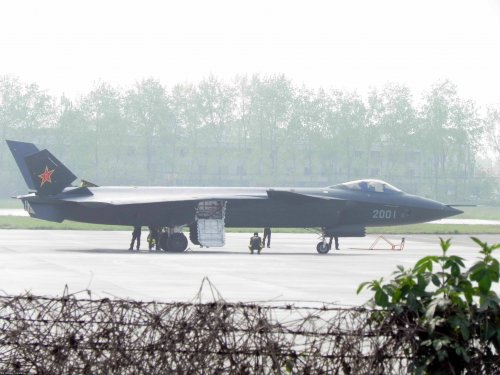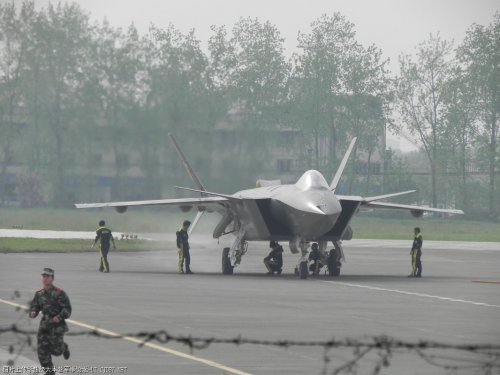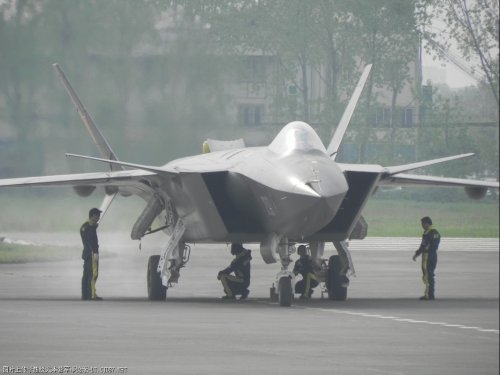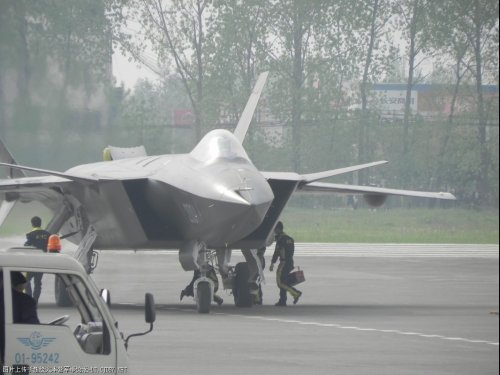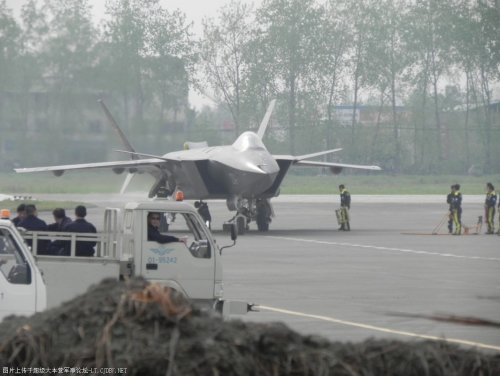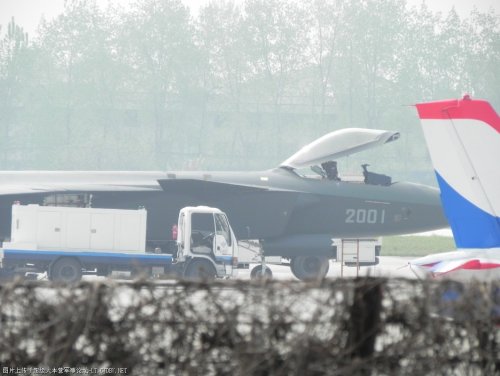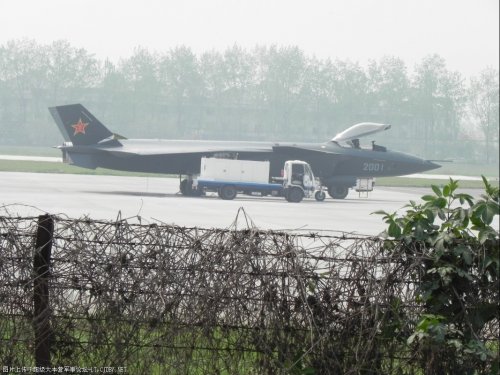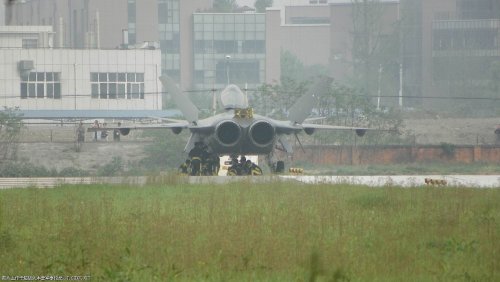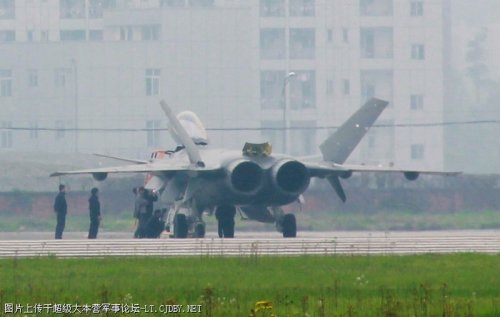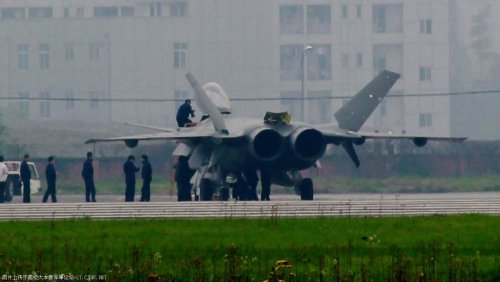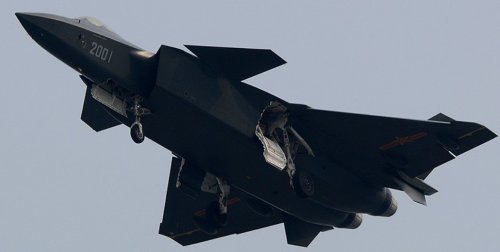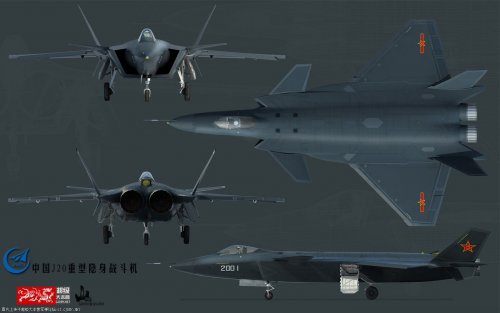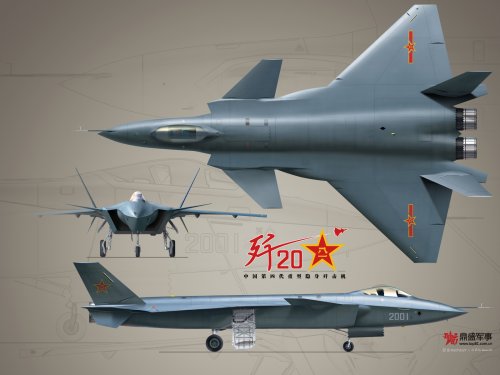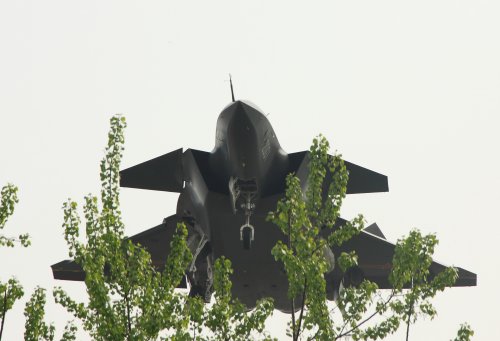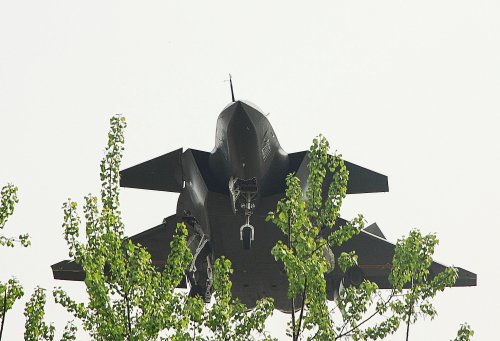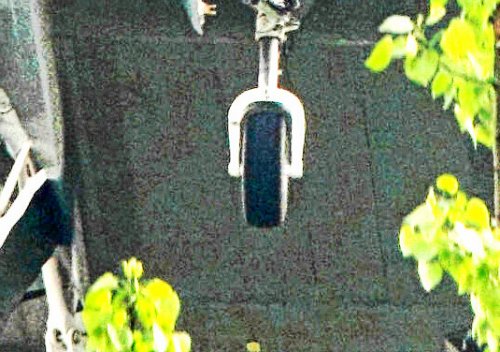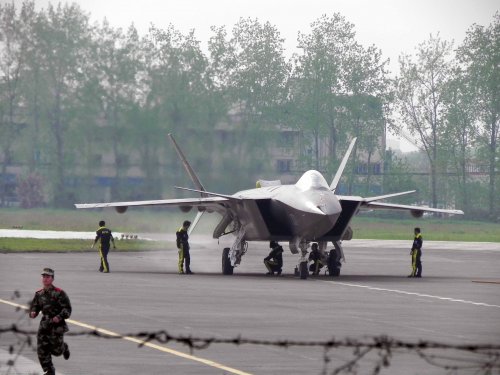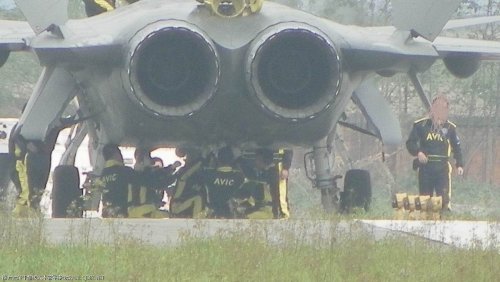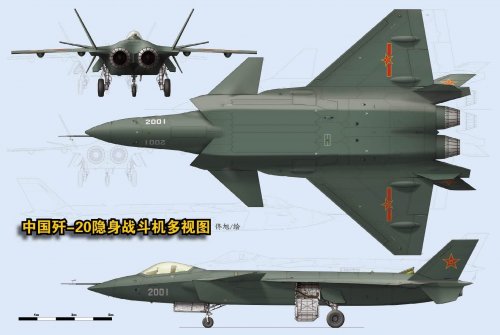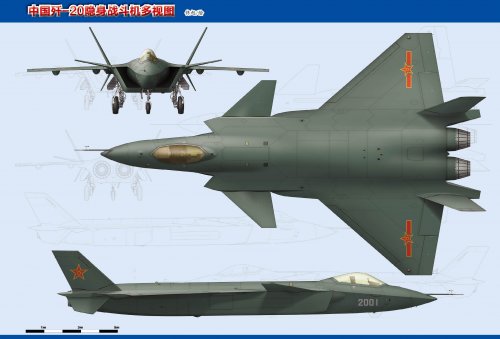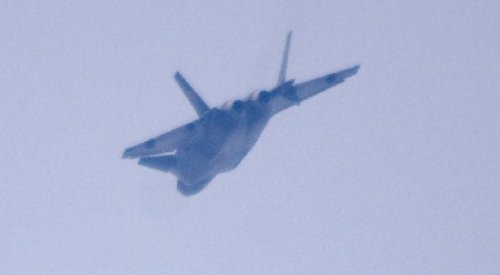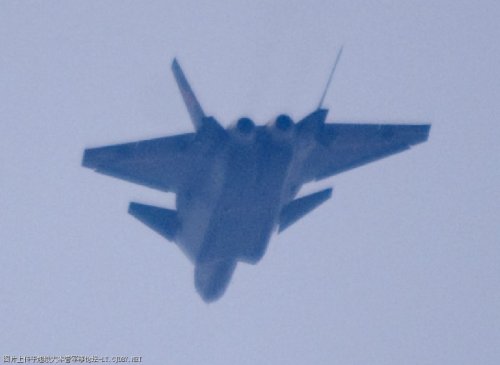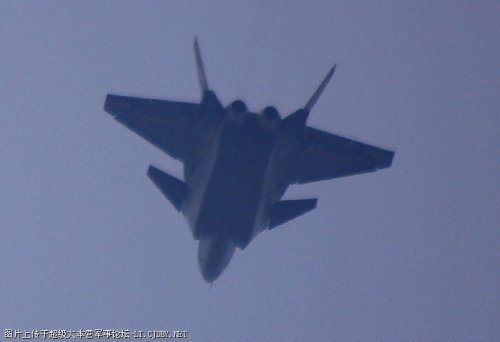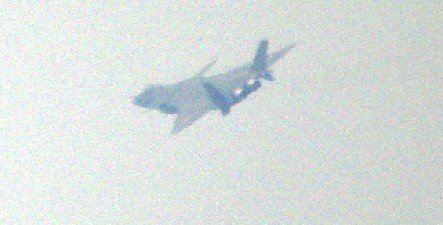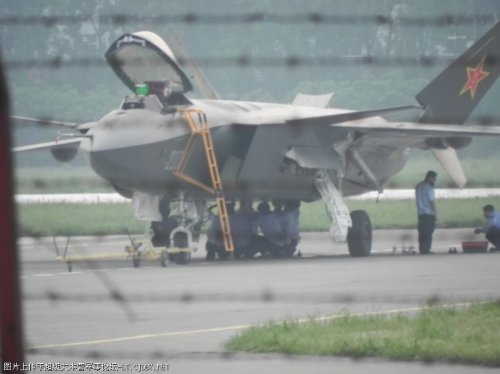You are using an out of date browser. It may not display this or other websites correctly.
You should upgrade or use an alternative browser.
You should upgrade or use an alternative browser.
Chengdu J-20 pictures, analysis and speculation Part I
- Thread starter hantang
- Start date
- Status
- Not open for further replies.
TAKHISS
ACCESS: Confidential
- Joined
- 4 March 2009
- Messages
- 59
- Reaction score
- 23
TAKHISS
ACCESS: Confidential
- Joined
- 4 March 2009
- Messages
- 59
- Reaction score
- 23
yes,it's the original sizessferrin said:NICE! Are those the original sizes? I just ask because I see wallpaper material there.Makes me think of a stealthy Mig-31.
last 3
Attachments
- Joined
- 3 June 2011
- Messages
- 17,332
- Reaction score
- 9,069
TAKHISS said:yes,it's the original sizessferrin said:NICE! Are those the original sizes? I just ask because I see wallpaper material there.Makes me think of a stealthy Mig-31.
Dang. That 3rd picture from the top is a beauty.
paralay
ACCESS: Top Secret
- Joined
- 21 April 2009
- Messages
- 13,170
- Reaction score
- 6,056
This may seem like a stupid question (or sorry if it has been covered) but I have seen pictures of pre-production F-22s, F-35s and even J-10s with unpainted (if that is the right way to put it) surfaces. Why have we not seen the J-20 like this? Could they be hiding less than stealthy materials or some other weakness or am I completely out to lunch on this?
saintkatanalegacy
Little Miss Whiffologist
- Joined
- 31 March 2009
- Messages
- 718
- Reaction score
- 9
^yip, quite long too...
the rearmost edge of the WB doors seem to be aligned with the rearmost edge of the MLG doors
the rearmost edge of the WB doors seem to be aligned with the rearmost edge of the MLG doors
- Joined
- 2 January 2006
- Messages
- 3,524
- Reaction score
- 3,121
flateric said:some see that belly WB doors are opened, too...
Yeppp ... ;D
Attachments
seruriermarshal
ACCESS: Top Secret
- Joined
- 4 May 2008
- Messages
- 1,177
- Reaction score
- 536
somebody said it used AL-31
The part of hunging down you called which I understand rightly perhaps was covered by two man stood in front of it, which you can see from the pic, and you can see it clearly at opposite side.
That door of wheel bay is not such wide we saw it in pic.
That door of wheel bay is not such wide we saw it in pic.
- Joined
- 6 August 2007
- Messages
- 3,011
- Reaction score
- 2,308
sferrin said:Actually YOU'RE the one who's been saying that. The idea that the coatings on the F-22's canopy defeat ONLY foreign radars is ludicrous. I hate to burst your bubble but the coatings aren't THAT specific. The well documented fact that US fighters have just as much difficulty tracking the F-22 (you know, because the canopy doesn't show up like a christmas tree on their radars as you claim it should) suggests that reality is more in line with what I've been saying. This is also why China would want to copy the canopy. You can continue to regurgitate words you clearly don't understand but that isn't going to bend reality to your will. Sorry.
I'm quite clear on what I have been saying. I have never argued wether or not China did or did not copy the F-22 canopy.
sferrin said:The idea that the coatings on the F-22's canopy defeat ONLY foreign radars is ludicrous
The F-22, and it's canopy, are designed to counter a specfic range of BANDS.
The J-20 is also designed to counter specific BANDS.
Each set of bands is different. A countermeasure for one will not work in the other.
At no point did I ever state that the F-22 canopy could only defeat "foreign radars". Physics does not respect flags.
sferrin said:The well documented fact that US fighters have just as much difficulty tracking the F-22 (you know, because the canopy doesn't show up like a christmas tree on their radars as you claim it should) suggests that reality is more in line with what I've been saying
As policy, the F-22 flies with reflectors unless in a combat deployment (the same is true of the F-117 and B-2). This includes exercises, with only 2 known exceptions. During acceptance testing F-22s do fly without reflectors for RCS verification against dynamic ranges. A phone call to the F-22 program management office will confirm most of this.
Let's look at this once more.
"In general, the RCS requirements for a system does not require it to be totally invisible to all conceivable threat radars at all times (which is practically impossible) but instead to negate threat radars via a combination of techniques." (Aronstein, Hirschberg, Piccirillo, pg 271)
The Hopeless Diamond was almost exclusively designed to counter the Gun Dish radar (Lovick, 186-189). As the XST requirements and Lockheed's computational tools evolved, the range of threats that the XST covered broadened - but clearly the focus was still on the Gun Dish radar (operating near 16GHz). Northrop's design was not optimized for the Gun Dish requirement, but attempted to cover a broader range of frequencies including long range search radars in the A and B bands - which was outside of the scope of the requirements.
Frontal Aspect Radar Cross Section, sq meters | ||
| Frequency | Northrop | Lockheed |
| 16000 | 0.004 | 0.0013 |
| 8400 | 0.0021 | 0.001 |
| 2300 | 0.0015 | 0.001 |
| 175 | 0.013 | 1 |
The Northrop design had a low RCS across a wider range of bands than the Lockheed XST, but the Lockheed design was lowest where it counted. The two designs were optimized for different threats - and Lockheed optimized for the actual requirements. This helps illustrate that you can't be "very" low across a wide range of bands, but you can be stealthy at one end and bright at the other.
But it does not answer why.
At the higher bands, small things matter. In "Skunk Works", Ben Rich told a story of a HAVE BLUE test flight that was ruined by a loose access screw. The screw was not tightened completely flush with the aircraft surface and produced a bright radar return during the test. Higher frequencies have shorter wavelengths, making small imperfections like Rich's screw appear visible when to a low frequency radar they would not be. Modern fighter radars use these high frequencies, as do a number of SAM/AAA systems. For example, the US APG-66 radar from the F-16 operates in the "I" band, which has a wavelength between 1 and 1.5 inches. US stealth aircraft (such as the F-22) tend to optimize for these frequencies because many adversary radars use them. To do so requires a level of attention to detail in design, construction, and operation that historically the US and Western nations have excelled at. Very precise manufacturing and quality control is required throughout the lifetime of the system, especially when it comes to the fabrication and application of absorbing coatings.
In contrast, the J-20 is very different at these frequencies. Even a cursory examination of the available photographs reveals major surface disruptions that would appear very bright to a modern high frequency radar. Access panels, cavities, and vents are visible which could not be eliminated or controlled without significant design changes. It is entirely possible that the PLA knows that the level of quality control necessary for a significant signature reduction in the higher frequencies used by modern air to air radars is out of their reach, and designed around that.
Clearly, though, there are some attempts made at signature reduction. There are features on the lower half of the aircraft that appear intended to reduce the radar signature of the vehicle. Some access panels and doors have serrated edges to scatter edge returns and eddy currents. Landing gear and weapons bay doors may have hydraulic assists to ensure a very tight seal. Many of the surface disruptions seen on the upper half of the aircraft are not present on the underside.
The sizing of some of these features matters. With even an imprecise measure of the size of some of these features it is clear that they were intended to mask the aircraft from lower frequency radars, and from a narrow range of aspect angles. Using photogrammetric techniques with some knowledge of the camera type, time of day, and other factors, more precise measurements can be extracted from the publicly available photos. Using a machine vision toolkit like OpenCV and a little research, this is not too difficult - but I will leave it as an exercise to the reader.
Export controls and all.
Clearly the J-20 is not optimized for a reduced signature in the high frequency bands. Lower frequency radars have a longer wavelength. For example, the "F" band radar of the AN/SPY-1D used on the AEGIS system has a wavelength between 3 and 4 inches. That may not sound like much, but when you are building an aircraft it can be a lot. Curiously, there are very few disruptions on the underside of the J-20 that are larger than about 4 inches. Features that might appear "bright" to radars in the C,E, and F bands appear to have been treated to signature reduction measures. If the J-20 were approaching an F-band radar head on from 30,000 feet or more, the radar might see only a very tailored reflection looking back.
A canopy is by its very nature a frequency selective surface. Visible light has to pass through. The door to a microwave oven uses the same principles as the canopy of a low observable aircraft. Radar stays on one side of the canopy, while visible light penetrates. If you look at a microwave oven door, you should see a collection of dots inside it. These dots are sized according to the frequency of the microwave, which is usually fairly low ("E" band). Because it uses a low frequency, those dots are effective at creating a resistive barrier to the radar on the inside of the oven. The radar energy can't pass through the spaces between the dots because the wavelength is far too long (4-6 inches). Visible light can pass right through.
For an aircraft canopy, the principles are the same, but the requirements are very different. Between layers of a clear material like Lexan you have a material such as gold, applied as those same teeny tiny dots. The dots are very small because you are trying to block a higher frequency, with a shorter wavelength than the microwave oven. Each layer of dots can cover one, maybe two radar bands. How you layer and align the dots matters, as one layer might line up such that the dots become ineffective. If you are very clever, you could make a layer that is reflective, followed by a layer that is absorbing. If you are VERY clever, you can model how the radar energy passes through these layers in 3 dimensional space, and how much energy makes it all the way through into the cockpit before coming back out through those same layers. Because of this, it is impractical to create a canopy that is able to cover anything but a narrow range of radar bands.
It is a complex problem, and requires a very high degree of modeling and manufacturing precision to pull off. Even the best manufacturing techniques that could become available in the foreseeable future are limited in the number of layers that can be produced. Fewer layers means fewer radar bands can be covered.
So the F-22 is designed for a reduced signature in high frequencies. I hope that is well established at this point.
The J-20 is clearly not designed for a reduced signature in high frequencies. It does have signs of optimizations for lower frequencies from specific aspects. The degree of reduction, though, does not appear to be anywhere near that of the F-22.*
The F-22 canopy would not be useful for a J-20 because of this.
* Given a reasonably accurate model of the surface of the object derived photogrammetrically as described above, it is entirely possible to then use a finite element electromagnetic analysis of the model to estimate radar cross section for different frequencies and aspect angles. Combining this with a methods of moment solution would increase accuracy, but is unnecessary. Modern graphics cards, as well as Amazon EC2 HPC services can run these solutions quickly and inexpensively using OpenCL or CUDA, though even simpler, near real time solutions for specular reflection only can be computed using just OpenGL and the OpenGL shading language.
Not that I've ever done that professionally. Export controls and all.
Works cited:
Lovick, Ed, "Radar Man: A Personal History of Stealth"
http://www.amazon.com/gp/product/1450248020/ref=as_li_ss_tl?ie=UTF8&tag=quellish-20&linkCode=as2&camp=217145&creative=399349&creativeASIN=1450248020
D. Aronstein, M. Hirschberg, A. Piccirillo, "Advanced Tactical Fighter to F-22 Raptor: Origins of the 21st Century Air Dominance Fighter"
http://www.amazon.com/gp/product/1563472821/ref=as_li_ss_tl?ie=UTF8&tag=quellish-20&linkCode=as2&camp=217145&creative=399349&creativeASIN=1563472821
Specific page:
http://books.google.com/books?id=uCI5KhlGM4kC&lpg=PA271&dq=f-22%20%22threat%20radars%22&pg=PA271#v=onepage&f=false
For more specific information helpful to understanding radar cross section and reduced observables, there is now a thread in "Useful Links" where I may post more. As for this thread, I am done. Seeing trolling behavior, incendiary posts, and personal attacks does not make users feel welcome, and is not something I will be a part of or encourage. My limited time to contribute is better spent elsewhere.
- Joined
- 27 December 2005
- Messages
- 16,454
- Reaction score
- 19,154
Dan, the general theory is good, but I would hesitate to say that the J-20 is definitely not aimed at low RCS against centimetric band airborne radar judged from photographs of the first prototype.
1) The offending small details that don't fit could be removed in a production design e.g. a stealthy airdata suite is planned but not ready for the prototype. The first airframe might not be intended for stealth testing.
2) Use of special materials might counter any apparent deficiencies in shaping.
If we assume (big assumption) that Taiwan is the threat environment we could assume threat systems are:
SAMs
I-HAWK
Tien Kung
Patriot (MADS)
AWACS
E-2C+
E-2T
1) The offending small details that don't fit could be removed in a production design e.g. a stealthy airdata suite is planned but not ready for the prototype. The first airframe might not be intended for stealth testing.
2) Use of special materials might counter any apparent deficiencies in shaping.
If we assume (big assumption) that Taiwan is the threat environment we could assume threat systems are:
SAMs
I-HAWK
Tien Kung
Patriot (MADS)
AWACS
E-2C+
E-2T
- Joined
- 2 January 2006
- Messages
- 3,524
- Reaction score
- 3,121
rousseau said:Overscan:
You are right, it has been proved the engine 2001 installed is AL-31, and here is (maybe)new photo
Again ... IMO nothing has been proved only that '2001' with the yellow parts features the AL-31F/FN and '2001' in complete grey features this WS-1XYZ-thing ... if this is an uprated, specialised or whatever AL-31 or a new design is open. However I admit that there are many details - number of pedals, inner AB-structure - seem to hint an AL-version and not a WS-10-based design.
Deino
saintkatanalegacy
Little Miss Whiffologist
- Joined
- 31 March 2009
- Messages
- 718
- Reaction score
- 9
hmmm... bottom one seems more accurate in terms of length
- Joined
- 3 June 2011
- Messages
- 17,332
- Reaction score
- 9,069
saintkatanalegacy said:hmmm... bottom one seems more accurate in terms of length
The top one looks like someone went "they think it's the same length as the F-22. Quick, someone make up a graphic to support that."
- Joined
- 9 October 2009
- Messages
- 19,975
- Reaction score
- 10,472
[Snippet from after flight conversation]
"Replacement compressor blades cost how much?!!!"
;D
"Replacement compressor blades cost how much?!!!"
;D
- Joined
- 3 June 2011
- Messages
- 17,332
- Reaction score
- 9,069
Grey Havoc said:[Snippet from after flight conversation]
"Replacement compressor blades cost how much?!!!"
;D
There's a video on youtube of an F16 coming up over the peak of a low hill, just clearing it, and picking up some tree branches. ;D
- Joined
- 27 December 2005
- Messages
- 16,454
- Reaction score
- 19,154
- Joined
- 2 January 2006
- Messages
- 3,524
- Reaction score
- 3,121
Today the 3. flight with now the gear up for the first time. :-*
I hope for more and better pictures sooooooon.
Deino
I hope for more and better pictures sooooooon.
Deino
Attachments
- Joined
- 9 October 2009
- Messages
- 19,975
- Reaction score
- 10,472
I wonder if it has the rear firing defense pod as standard. ;D
(Obligatory Firefox reference.)
(Obligatory Firefox reference.)
- Joined
- 2 January 2006
- Messages
- 3,524
- Reaction score
- 3,121
quellish said:Also the first without the radar reflectors? Or are my eyes playing tricks on me?
What "radar reflectors" ??
Deino ???
- Joined
- 3 June 2011
- Messages
- 17,332
- Reaction score
- 9,069
quellish said:Also the first without the radar reflectors? Or are my eyes playing tricks on me?
Maybe it doesn't need them.
- Joined
- 2 January 2006
- Messages
- 3,524
- Reaction score
- 3,121
- Status
- Not open for further replies.
Similar threads
-
-
-
Shenyang FC-31 prototype to J-XY / J-35 naval fighter
- Started by Foxglove
- Replies: 714
-
-

